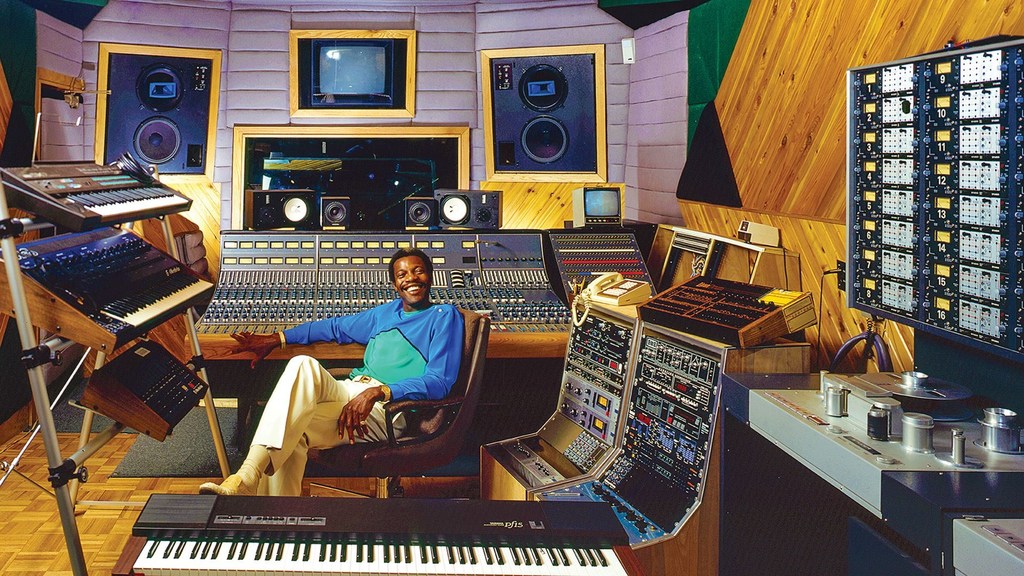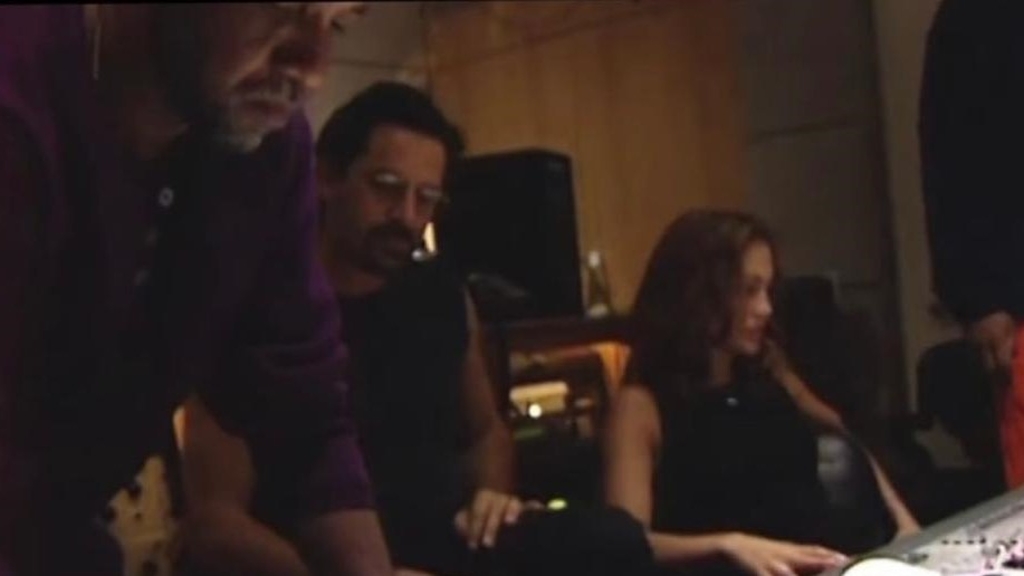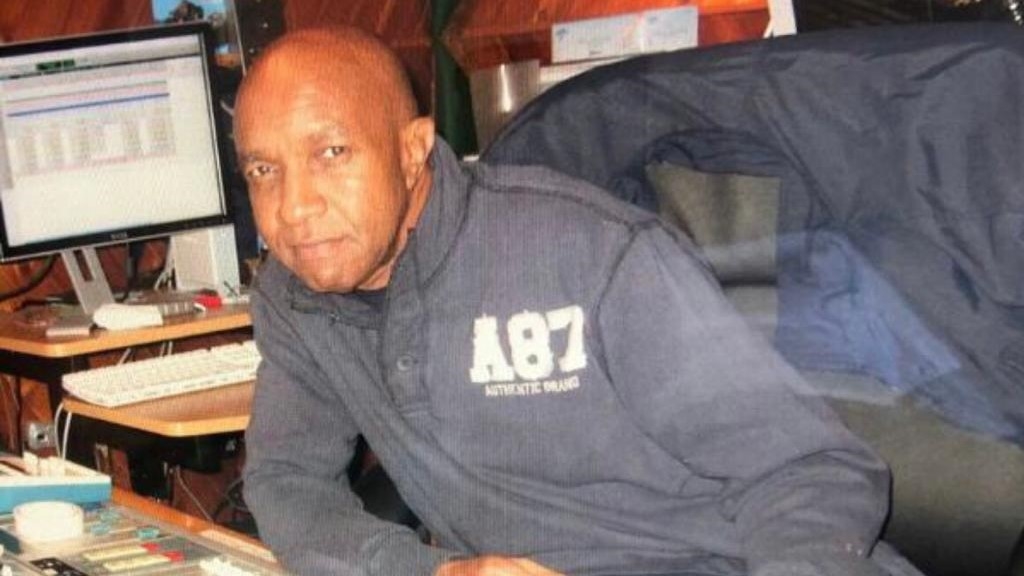June is Caribbean-American Heritage Month, a month dedicated to recognising and celebrating the significance of Caribbean people and their descendants in the history and culture of the United States. Over the next few weeks, Loop News will profile some people of Caribbean descent who have made a tremendous impact in the entertainment industry in the United States.
Franklyn Grant recalls the first time he met Mariah Carey.
Prior to meeting her, the musician, producer and audio engineer, had expressed doubt about the authenticity of her famous whistle notes.
When she stepped into the recording booth, she hit the note and he realised he was wrong.
“I apologised and from that moment her and I working together were like magic. We worked for like four hours. We were like Bobbsey twins from then,” he says.
Carey is one of Grant’s favourite artistes that he has worked with. Her work ethic, he says, is amazing.
Working with global chart-toppers and countless others across multiple genres has given Grant insight into what it takes to be a successful musical star.
He plans to use that knowledge to help artistes in his native country Trinidad and Tobago and is currently on the lookout for unknown up-and-coming talent who is willing to listen and learn.
Grant hails from the eastern town of Tacarigua and started his musical journey at the age of nine playing the steelpan.
“I couldn’t wait for school to be over to head to the panyard. Music and art were the two main things I cared about and football,” he recalls.
In December 1970, at the age of 19, Grant left T&T for the shores of the United States to live with his mother.
“When I landed in America I wanted to go home. I was in Connecticut and after the first couple of weeks I said I going home, it had no steelband. The woman my mother worked with asked me what was the problem, I said I am a music guy and she asked if I could get steel drums would I stay? She said she would buy the drums for me,” Grant recalls.
He went to the Manhattan workshop of legendary pan pioneer Ellie Mannette who made pans for him to form his own steelband. The band was called Trinidad Panasonic and played for events all over Connecticut.
“I coulda charge anything and they would always say okay,” he says with a laugh.
The Vietnam War was going on at the time and Grant received several draft letters. He joined the United States Air Force in February 1973 as an Air Operations Specialist and was sent to Las Vegas. There he started a band on base, bringing in his steel drums from Connecticut and introducing an American electric bass player.
From Nellis where he was first stationed to England and back in the US, Grant performed consistently, winning competitions such as the Worldwide Force Talent show where he won the Classical Division playing Variation on a Theme from Paganini on double seconds. The judges were Quincy Jones, Artemus Gordon from the Wild Wild West Television Show and Lyn Collins from James Brown’s Touring Band.
While stationed in England, Grant, who was married with a son by then, thought about his future and decided to attend audio engineering school so he could work in the recording industry.
He attended the Institute of Audio Research in Manhattan and scored his first audio engineering internship at the Platinum Factory Recording Studio.
At Platinum, Grant set up a package called the Breakthrough. For US $250, artistes could record for five hours on a Sunday and get a two-inch reel of tape.
“Set It Off” by electro group Strafe, which Hip-hop, house, techno, and EDM artistes have extensively sampled over the years, came out of that programme.
Rawlston Charles, the top calypso producer in New York and owner of Charlie’s Records, recorded at Platinum until he decided to build his own studio, Rawlston Recording Studio.
Grant helped Charles to develop his studio and became immersed in Caribbean sounds. Rawlston’s Studio also introduced him to many of the top Hip Hop stars of the day.
“I worked with everybody. Duke’s Thunder, all of Explainer’s songs, all of Blue Boy…I was the mixer and they liked how I guided them through the vocals. Then the Americans came. I worked with Dougie Fresh on The Show, Levert, the Fat Boys, Kids at Work, Kurtis Blow, Heavy D, Dr. Jeckll and Mr. Hyde, Whodini, Pieces of a Dream, Bernard Wright, Doug E. Fresh, and B.J. Nelson, Teddy Riley, Andre Harrell and Alonso,” he says.
During this time, Grant also assisted Ed Watson with the innovation of Chutney music for the J.M.C. Record Label, owned by Mohan Jaikaran and worked on projects with Sundar Popo, Atiya, Babla and Kanchan and Anand Yankaran

Rawlston Charles
In 1988, Grant left Rawlston’s to work at Soundtrack Recording Studios, the largest studio complex in Manhattan. There he was involved heavily in Pop, Rock, R&B, Dance, and House music.
“My engineering talent was being fine-tuned at this studio complex because this was all big-time everything. I worked on mixes for Gun and Roses, Fine Young Cannibals, Kool and The Gang, Ronney Jordan, Pattie La Belle, the famous Rob Base & D.J. EZ Rock’s big Hip Hop hit, “It Takes Two”,” he explains.
Sound Track Studios are where most of the television commercials are done and Grant worked on some for Chevrolet Automobile, Kentucky Fried Chicken, and many more.
“Most important were the many mixes I worked on with Justin Strauss and Murray Elias. They were king of the Dance Remixes. I used to play lots of Soca rhythms on these mixes,” he says.
In 1989, Grant engineered and produced a group from Antigua named Burning Flames, for their manager Dr. G. He did the whole album in a small studio in the Bronx called E&F Recording producing hits “Workey Workey” and “Island Girl”, which was used in the movie soundtrack for Weekend at Burnie’s II.
At the same time that he was producing Burning Flames, Grant was asked by Teddy Riley to engineer his group Guy. They did the hit record, “My Fantasy”.
The jobs kept coming.
“Charles Stetler, the most powerful manager in the American music industry called. For him, I engineered, co-wrote and produced the Fat Boys’ last album, “On and On”. After that project I did Puff Daddy’s first big artist, in 1990 on Uptown, MCA, Father M.C, which featured his then-new group Jodeci on background vocals.”
In 1991, Riley asked Grant to come to his Future Recording Studio in Virginia Beach.
There he managed his studio and engineered, produced and co-wrote for artistes like Mc Lyte and Wreckx N Effects.
“I actually found the song, “Rump Shaker” from the files of one of our producers from New Jersey. The list of artists that I worked with included, Michael Jackson, Blackstreet, L.L. Cool J., Bobby Brown, Whitney Houston, and many, many more. One of the most impacting sessions was with S.W.V. With them we did, “Human Nature” which was absolutely beautiful sounding,” he says.
At Future Recording Studio, Grant also devised a joint program with the Virginia City Police Department, and Future Records, to host an annual basketball tournament for the local kids as well as a talent show.
Super producer Pharrell Williams and his group the Neptunes were discovered via this initiative.
“Pharrell usually came to the studio and sat with me, in order to learn production formalities. The result impacts the music the international music industry to this day,” Grant says.

Franklyn Grant in studio with a then-unknown Jennifer Lopez working on her debut album.
Grant returned to New York where Cory Rooney and Prince Markie Dee of the Fat Boys were then the A&R representatives at Sony Records.
Rooney was producing Mariah Carey, and asked Grant to engineer the project, which was her Butterfly album.
He followed that up by working on Jennifer Lopez’ first album, “On The Six” which took a year to complete. JLO was fresh off the Selena movie and Grant recalls giving her advice on many things including being aware of sanitary practices in hotels.
Grant says during his spare time he worked separately with 50 Cents at Mohan Jaikaran’s Studio and worked with Aaliyah on the song, “One In A Million” which was recorded and mixed in one day.
In 2018, Charles of Charlie’s Records introduced Grant to Soca King Machel Montano. They recorded “The Road” which featured American Hip Hop artist Ashanti, and “Famalay” the Road March of 2019.
Grant says he is still working closely with Montano and they plan to construct a recording studio in Toco.
“I want Trinidad music to grow. We are scared of doing things differently. We don’t have that hunger. This is the best time for soca, all the beats in the US today have soca kicks and snares and the Americans doing chants, they learn from the Caribbean.
Asked about a key ingredient for success, Grant said artistes must be prepared to listen. He said too many Caribbean artistes think they know more than the studio experts do.
“First thing they have to do is listen and do what they are told to do. You can’t go in a kitchen with a big-time chef and tell him what order to put the seasoning.”

